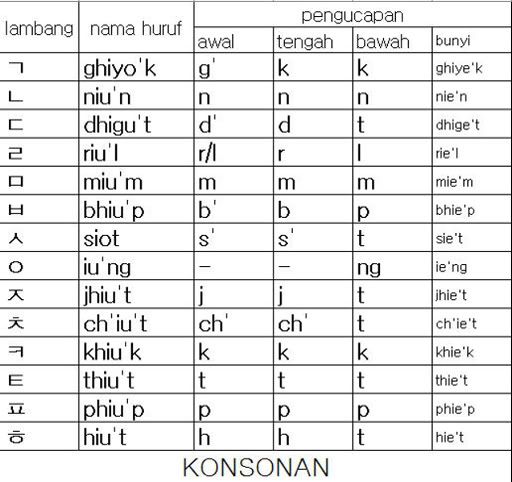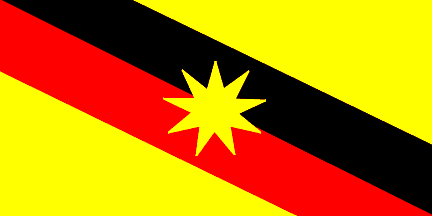Rooster takes a trip to Dreamland while Orchid and Liz learn how to converse in Korean in their language class. They now share with you their adventures and misadventures with the language in everybody’s favourite series, MYK5!
Now that we’ve learnt our ABCs…sorry, I mean 가, 나, 다’s the class is ready to attempt simple conversations in Korean. Sweet!
At the start of our 5th class, 선생님 went:
Teacher: 안녕하세요? (annyeonghaseyo = hello)
Class: 안녕하세요! (annyeonghaseyo = hello)
Teacher: 어떻게 지냈어요? (eoddeokhe jinaesseoyo? = how are you?)
Class: 잘 지냈어요. (jal jinaesseoyo = fine)

We then launched into our self-introduction (자기 소개) exercise, with each and every person having a go at introducing him/herself to the class. (Text can be found in
MYK4).
After many 만나서 반갑습니다s (mannaseo bangabseumnida = Nice to meet you) and 박수s (baksoo = clapping), we moved on to the next conversation text.
Negative sentences
Based on the introduction practice, we learnt how to make negative sentences, one of the examples would be:
Orchid: 안녕하세요? 저는 어킷이에요. 이름이 뭐예요?
Annyeonghaseyo? Jeoneun Oekhishieyo. Ireumi mwoyeyo? = Hello, I’m Orchid. What’s your name?
Liz: 안녕하세요. 리즈예요. 싱가포르 사람이에요?
Annyeonghaseyo. Lijeuyeyo. Singgaporeu saramieyo? = Hello. I’m Liz. (Are you) Singaporean?
Orchid: 아니오. 싱가포르 사람이 아니에요. 말레이시아 사람이에요.
Anio. Singgaporeu sarami anieyo. Malleisia saramieyo = No, I’m not Singaporean. I’m Malaysian.
Liz: 아, 그래요? 반갑습니다.
Ah, geuraeyo? Bangabseumnida = Ah, I see (it’s more of an expression of agreeing. “Ah, I see”, “Ah, like that” etc). Nice to meet you.
Orchid: 저도 반갑습니다.
Jeodo bangabseumnida. = Nice to meet you too.
Introducing another person

We also learnt how to introduce a 3rd person to our friend. From the example above, now that Liz and Orchid have met, Rooster – miracle of miracles – comes into the picture ;-).
Rooster: 어킷씨, 이분이 누구예요?
Oekhitsshi, ibooni noogooyeyo? = Orchid, who is this person?
Orchid: 리즈씨예요.
Lijeusshiyeyo = This is Liz.
Rooster: 안녕하세요 리즈씨. 저는 루스터예요.
Annyeonghaseyo Lijeusshi. Jeoneun looseuteoyeyo. = Hello Liz. I’m Rooster.
Liz: 안녕하세요. 의사예요?
Annyeonghaseyo. Uisayeyo? = Hello. (Are you) a doctor?
Rooster: 아니오. 의사가 아니에요. 회사원이에요.
Anio. Uisaga anieyo. Hwesawonieyo. = No, I’m not a doctor. I’m an office worker.
Asking about an object
Next we learnt how to ask about things. The following conversation will be based on the picture below.
 Liz:
Liz: 이게 안경이에요?
Ige angyeongieyo? = Is this a pair of spectacles?
Orchid: 아니오. 안경이 아니에요.
Anio. Angyeongi anieyo. = No. These are not spectacles.
Liz: 그럼, 이게 뭐예요?
Geureom, ige mwoyeyo? = Then, what is it?
Orchid: 가방이에요.
Gabangieyo. = It is a bag.
Getting possessive
After much practice for various objects using the above scenario, the class learnt how to talk about possessions, saying that something is mine.
 Orchid:
Orchid: 이게 뭐예요?
Ige mwoyeyo? = What is this?
Liz: 신발이에요.
Shinbarieyo = These are shoes.
Orchid: 누구 거예요?
Noogoo geoyeyo? = Whose are these?
Liz: 제 거예요.
Je geoyeyo. = They are mine.
Orchid: 참 예뻐요.
Cham ye-bbeo-yo. = Very pretty.
Liz: 고마워요.
Gomawoyo. = Thank you.
Once the conversation topic is established, in this case the pair of shoes, you can use 거 (geo) to refer to the shoes.
고 마워요 (gomawoyo) is usually used among friends and is a casual way to say thank you. Stick to 감사합니다 (gamsahamnida) if you’re not sure whether you are close enough to use the casual form of “thank you” as it is the politest way to thank someone in Korean.
After much practice until my thoughts became a little muddled, it was time to pack up and leave. Teacher advised us against missing any classes from now on as the lessons will get tougher and “meatier”.
Before we wished each other 안녕히가세요 (annyeonghigaseyo = goodbye), Teacher went:
Teacher: 여러분, 수고 하셨습니다!
Yeoreoboon, soogo hasyeotseumnida! = Everyone, thanks for your trouble/kind labour!
Class: 감사합니다, 선생님.
Gamsahamnida, seonsaengnim. = Thank you, Teacher.
And with that, class was adjourned.
source:http://k-popped.com/search/label/Mind%20Your%20Korean










